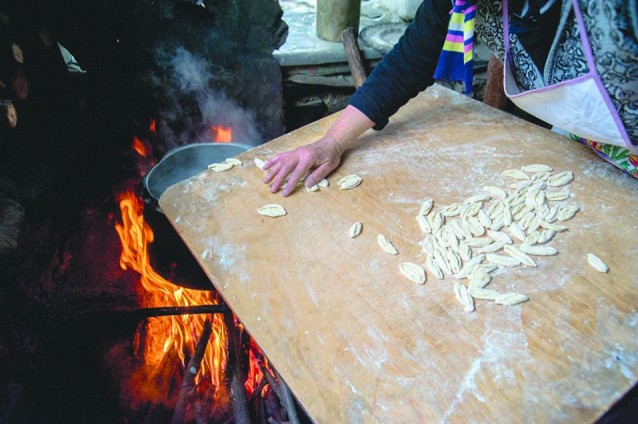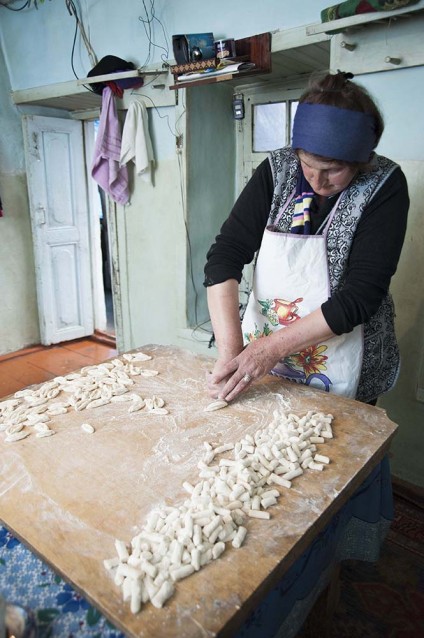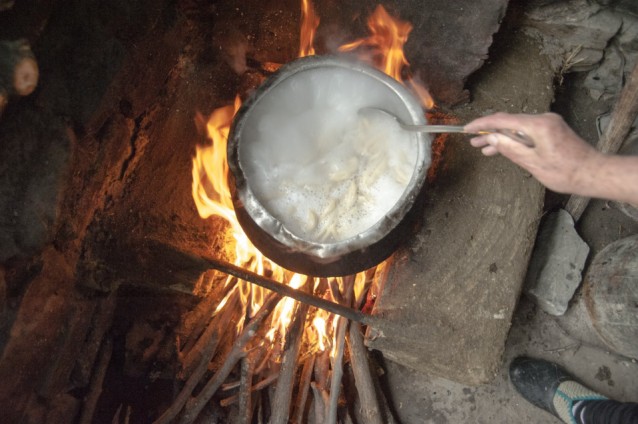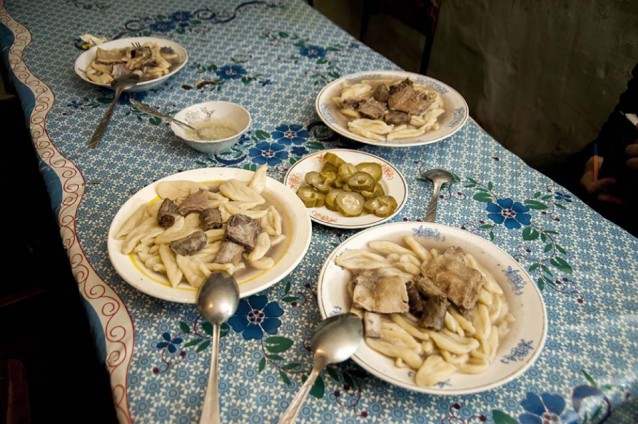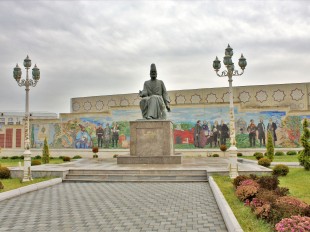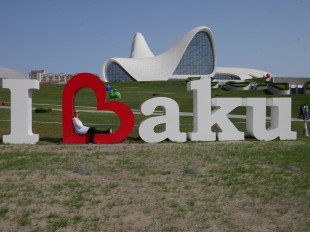During both of my experiences of being a guest in Qakh, I’ve been served the very poetically named surhullu (sürhüllü in Azerbaijani), one of the region’s signature dishes. The first time was in picturesque Ilisu while researching an article about Caucasian brown bears and the second was during a recent stay in the storied village of Saribash (see Saribash: Collecting Memories in Qakh’s Highest Village earlier in the issue).
Both of these scenic villages are nestled at the foot of the Caucasus Mountains to the north of Qakh. While Ilisu is well-connected by a tarmacked road, Saribash, 7 km to the north, is the region’s most remote mountain village and to get there you’ll need a Soviet jeep and an enthusiasm for near-impossible river crossings.
Since in Ilisu my attention had been fully consumed by the harrowing tale I was hearing from the survivor of a bear attack (see A Walk in the Woods in the Winter 2016-17 issue), it wasn’t until Saribash that I really learnt the ins and outs of this unconventional meal.
This is a purely local dish. Some may claim that it is theirs, but it is a dish created in Saribash. They can’t cook it the way it is cooked here in Saribash, said our host Guleser Mirzoyeva, suggesting there might be an unofficial competition for where exactly in the northwest does it best.
Saribash sausages
This curious dish is normally prepared from mutton or beef, sometimes even using goat’s meat, but in reality it’s not all that important. What matters is how it’s prepared, or, more accurately, pre-prepared. Essentially surhullu is a homemade pasta dish topped with sausage-like strips of dried meat and chunks of dried ribs. The drying is the most unique feature – it takes place over winter and involves stuffing the meat inside carefully measured intestine strips.
Guleser shared with Visions the essence of this Qakh culinary tradition: Surhullu is a very old dish. It has been around since ancient times. The cow is slaughtered in October. There are people who slaughter two, three, four or even five cows – whatever you can afford. Then the meat is hung out to dry. The most important thing is to make sure that the meat is not red on the inside by December. You also need to prevent flies from settling on the meat. In order to cook surhullu, we need to remove the backbone of the animal and the bowels. Then we slice the meat to be used in the dish.
The meat generally comes from the lower leg but another ingredient used is lung. Both are stuffed inside separate strips of intestine along with herbs such as garlic or chemen (hilbas), foraged locally in the Caucasus Mountains. These intestine-filled sausages are then hung out to dry from October to December when the wintery sun and frosty air offer ideal drying conditions. As soon as the meat turns white, it’s ready to be cooked, although it can also be preserved until late spring or for as long as the weather stays cool.
So when the meat is dry, we wrap it in some fabric, slice it and put it aside, explained Guleser. You can also use this meat to cook soup, herb and walnut pilaf. This is a tradition here.
When it comes to preparing the actual dish, the meat is boiled for between one and two hours – the younger the animal, the quicker the process. Guleser adds cornelian cherries to the broth to give a little extra flavour and as that boils away, she busies herself with crafting the pasta. For this, We need some flour, salt and a little water, she said. We roll out the dough. It should not be tough, but it should not be too tender either.
The dough is left to settle for 10 minutes before being diced and rolled into long strips. These are chopped into dozens of small pieces, which are given a distinct shell-like pattern by a pressing and pushing motion with one’s index finger. Finally, the pasta dough is boiled for about 10 minutes.
It may seem easy to us and not very easy to someone living outside. You can use both the meat itself and the bones – whatever your preferences are, continued Guleser.
Fit for a guest
With both meat and pasta boiled and ready, it was time to lay cameras aside and put the dish to the test. We were at home with the Mirzoyevs in their multi-functional sitting and dining room, which becomes a bedroom in the evening – typical of the cosy homes in mountain villages throughout Azerbaijan. A teapot puffed away on a wood-fired stove and an old TV crackled out a popular Turkish reality TV show adding to the cosy rustic setting, ideal for sampling this very homely dish.
While the little sausages filled with meat from the leg seemed a little bland, I was surprised by the pleasant sharpness of the lung sausages, which were reddish on the inside. Meanwhile, the pasta was thick and slippery, counterbalancing the dried meat, although I must admit to thinking how a dollop of butter really wouldn’t have gone amiss.
That being said, in a similar way to khash – that more famous dish featuring usually unused animal parts – rather than a conqueror of taste buds, surhullu is surely first and foremost an energy source. And historically, like khash, it must have been a way of making sure that absolutely nothing went to waste.
According to local villager Mahmud Azimov, the origins of this and other traditional Saribash dishes are also to do with the village’s altitude and customs:
This place is so old that the dishes cooked here can’t be cooked elsewhere because there is no such technology for drying meat anywhere else. For example, surhullu, then a dish called “khinili,” which has even smaller pieces of meat. Then there’s a herb called “avalik,” which is dried and then used in a pilaf.
There is [also] “gomma.” There are several types of gomma – the sour gomma, the oily gomma, and something else [...] These dishes go back to the time of the Oghuz Turks (the first settlers – Ed.) because they themselves were pure and natural. The Oghuz Turks were very kind and faithful people. But as soon as you go down the hill from here, it’s over. The purity and truthfulness end.
Centuries after their Oghuz ancestors first settled here, surhullu is alive and well in the region. So much so that families like the Mirzoyevs consume it between once and three times a week. According to Guleser this depends on the number of guests, who often make this rural treat a special request. And, fortunately for them, we are ready to treat anyone to surhullu, she said.
|
Ingredients
(To feed 4 people)
- Roughly 200 g of dried meat (mix of leg and lung) or approximately 40-45 cm of filled intestines
- 0.5 kg of flour
- 0.5 teaspoons of salt
- 2 glasses of water
Guleser’s instructions
- First you boil the dry meat in water for an hour or two (depending on the age of the animal
from which the meat is taken)
- Then we measure out 0.5 kg of flour, half a teaspoon of salt and 0.3 litres of water and mix them together to make dough
- We leave it to settle for 15 minutes before making little pieces of dough
- Meanwhile, in another pan we boil some water and then we add the small bits of dough
- When they float to the top and you see the foam rising over the pan, the dough is cooked - We take out the bits of dough and put them on a plate, adding the boiled dried meat over the top, as well as some extra broth to cover the meal
|
